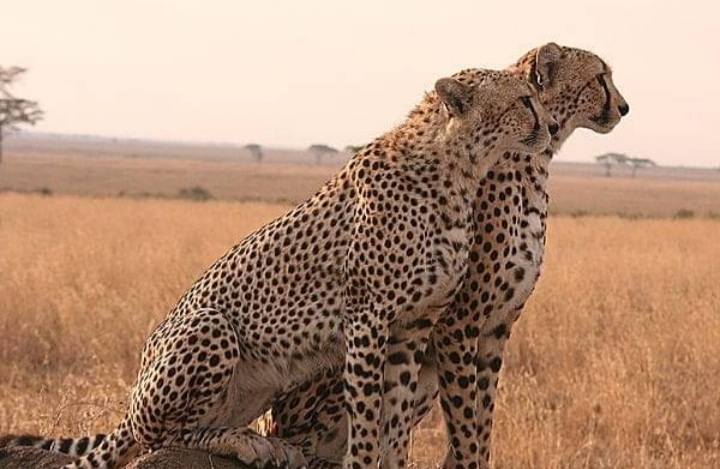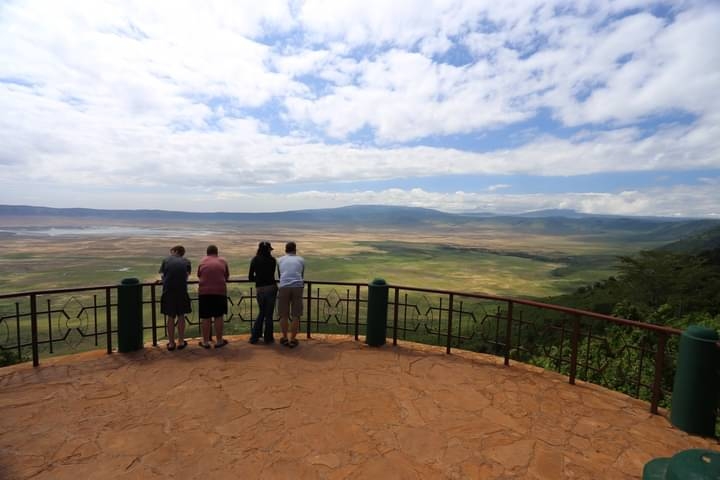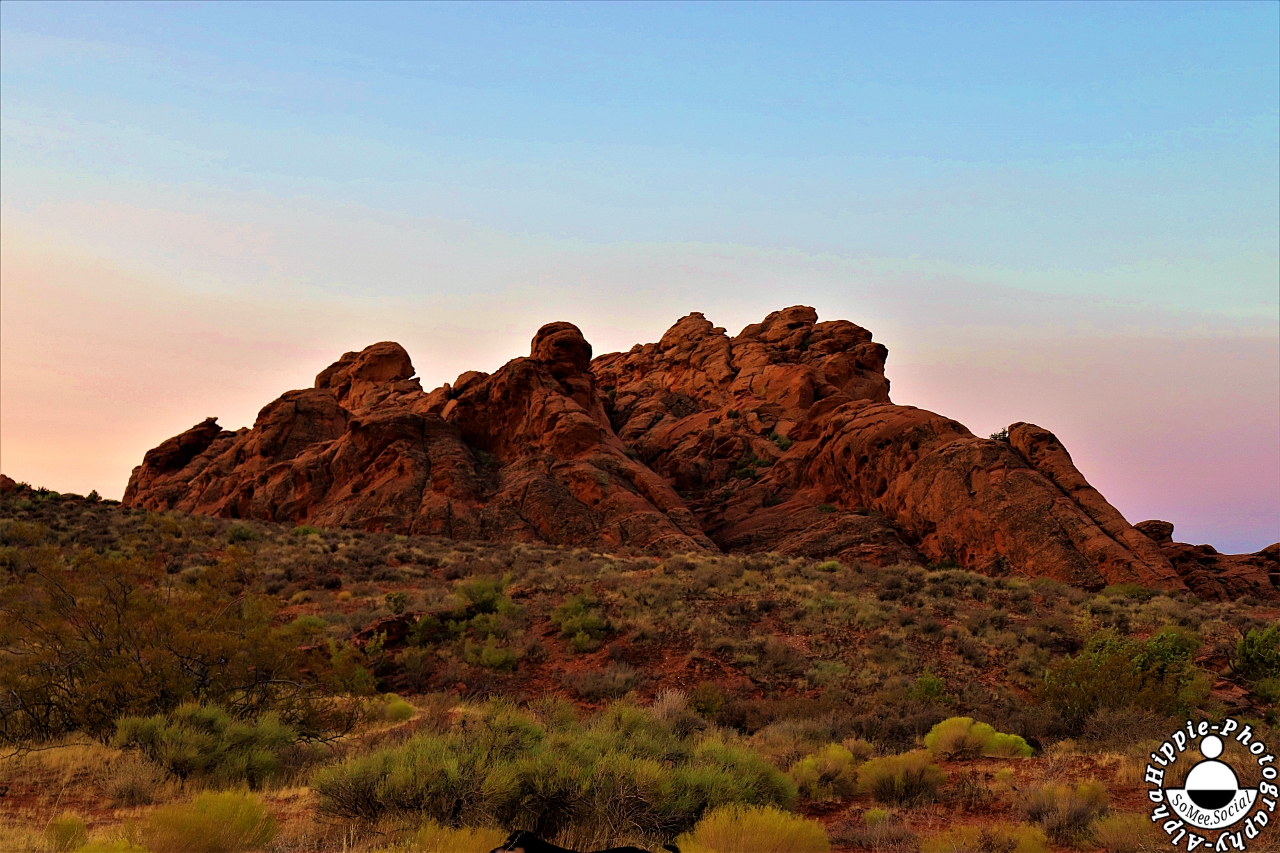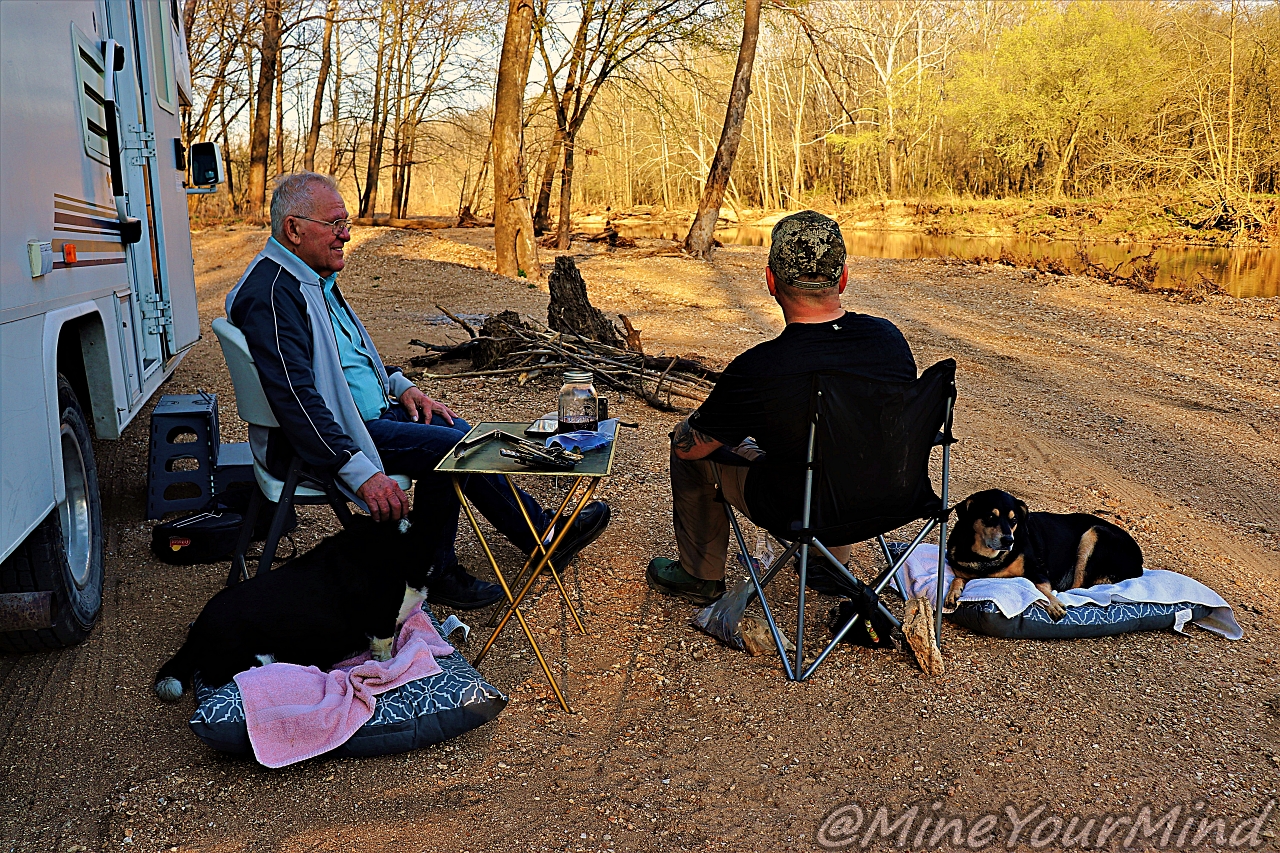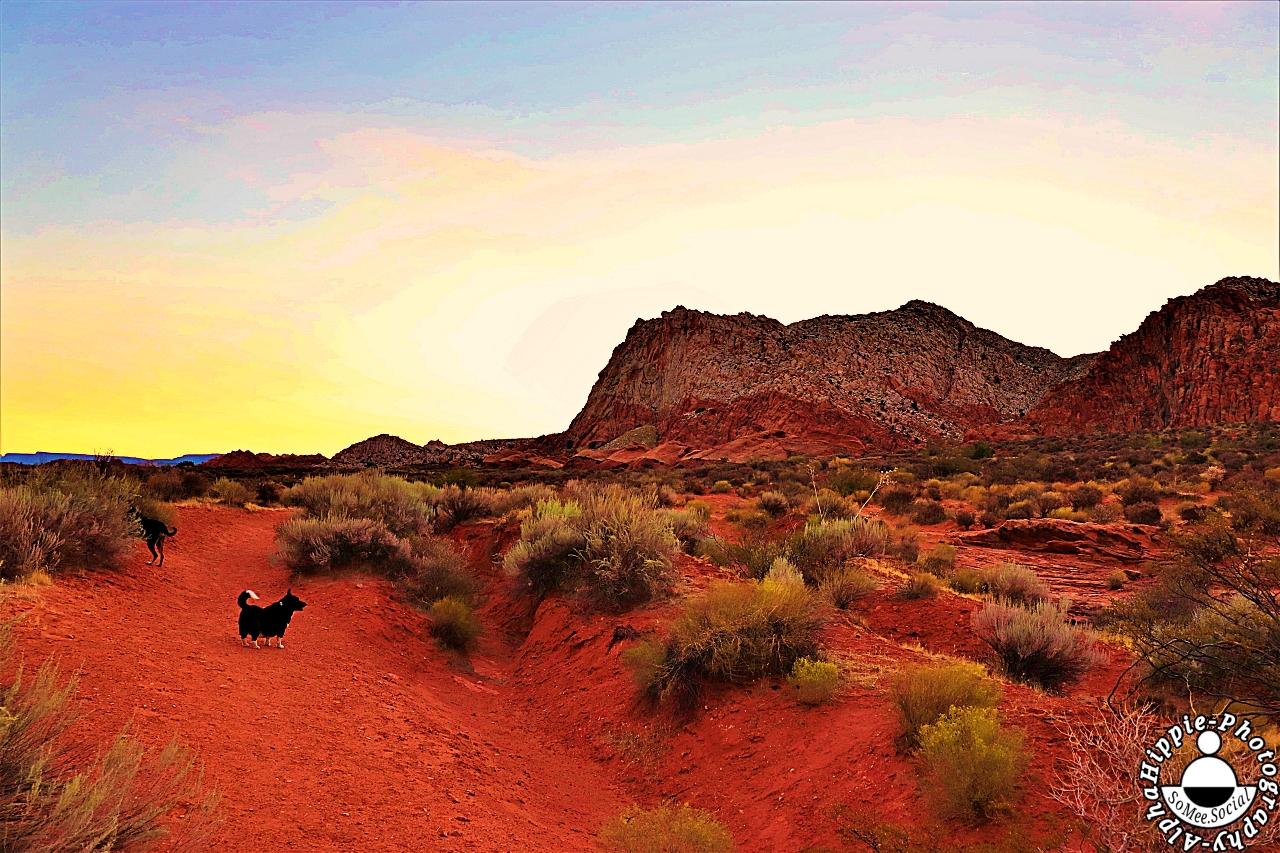We found our way to the
#RedCliffsWildlifeConservationArea because of some RV trouble we had. Just before the trip we had a frontend alignment done and the mechanic failed to torque any of the bolts down. Our camber adjustor fell out while we were two-tracking on a backroad near
#BryceCanyon in
#Utah and the tie rod adjustor sleeves on both sides were loose as well. If you envision Utah being a vast expanse with few amenities, you are 100% correct. There was not one place within a towable distance that could service anything the size of our 31' RV.
Towing would have cost $1500 and I wasn't paying that. So, I went on a hike and found the part we lost then put everything back together well enough so we could drive to the only place that could help us. This required us to drive 4 hours in the opposite direction from where we were heading. We couldn't get there before the place closed, so I had to find us a free
#boondocking site. This is what I found and the
#views turned a negative situation into one that simply added to our adventure.
I'm glad it happened how it did, because if the part fell out in a different spot during our journey, it could have sent us down into some very deep rocky valleys. As you can see, Nietzsche and Lucy weren't bothered by the ordeal, LMAO. They love it when we find a new place for them to run free. As soon as we pulled into the
#trailhead parking all the stress lifted from me as well. From there on out the negative had turned into a positive. It's a good thing I'm an auto mechanic, among other things.
#SoMee #someeoriginals#originalcontent
#photography #Awesme #RVing #roadtrippin #boondocking #hiking #trail #travel #myphoto #LandscapePhotography #nature #scenery #History #adventure #life #geologyWe found our way to the #RedCliffsWildlifeConservationArea because of some RV trouble we had. Just before the trip we had a frontend alignment done and the mechanic failed to torque any of the bolts down. Our camber adjustor fell out while we were two-tracking on a backroad near #BryceCanyon in #Utah and the tie rod adjustor sleeves on both sides were loose as well. If you envision Utah being a vast expanse with few amenities, you are 100% correct. There was not one place within a towable distance that could service anything the size of our 31' RV.
Towing would have cost $1500 and I wasn't paying that. So, I went on a hike and found the part we lost then put everything back together well enough so we could drive to the only place that could help us. This required us to drive 4 hours in the opposite direction from where we were heading. We couldn't get there before the place closed, so I had to find us a free #boondocking site. This is what I found and the #views turned a negative situation into one that simply added to our adventure.
I'm glad it happened how it did, because if the part fell out in a different spot during our journey, it could have sent us down into some very deep rocky valleys. As you can see, Nietzsche and Lucy weren't bothered by the ordeal, LMAO. They love it when we find a new place for them to run free. As soon as we pulled into the #trailhead parking all the stress lifted from me as well. From there on out the negative had turned into a positive. It's a good thing I'm an auto mechanic, among other things.
#SoMee #someeoriginals#originalcontent #photography #Awesme #RVing #roadtrippin #boondocking #hiking #trail #travel #myphoto #LandscapePhotography #nature #scenery #History #adventure #life #geology



